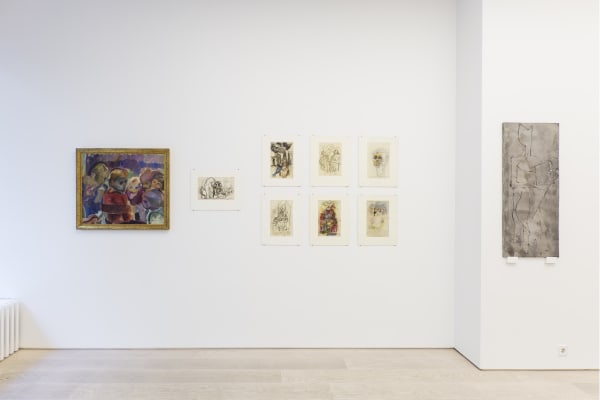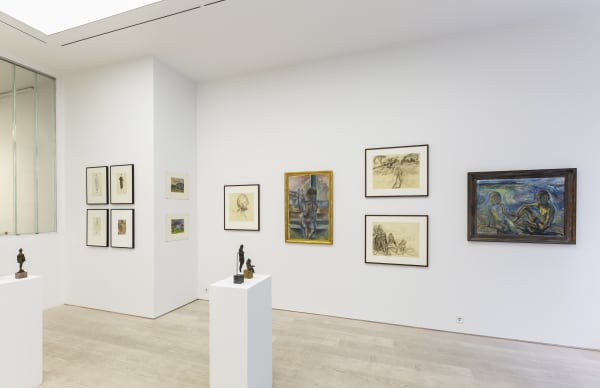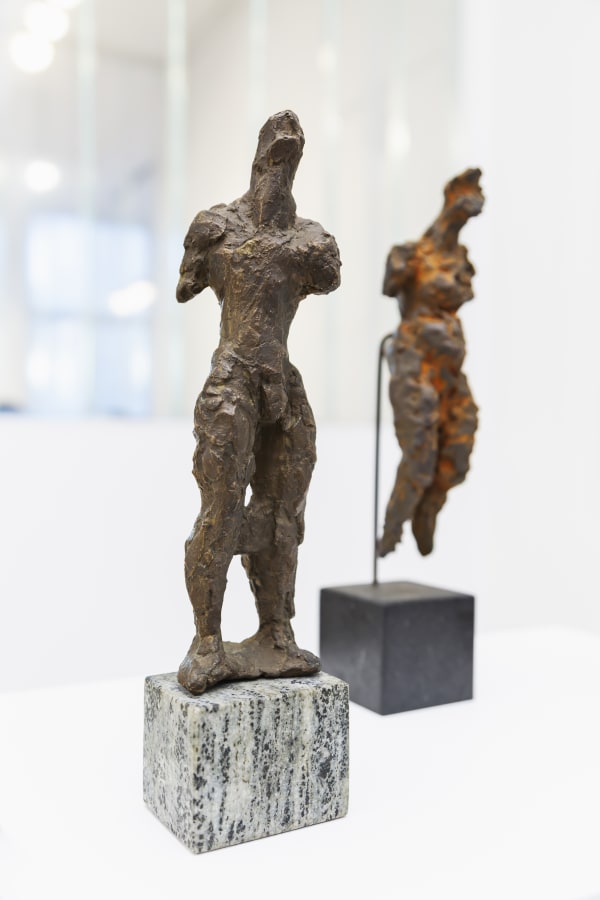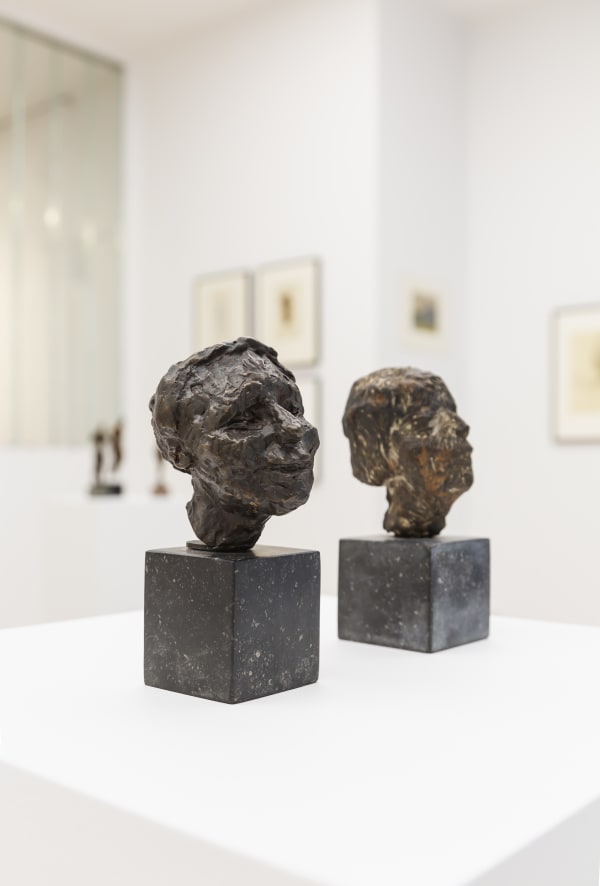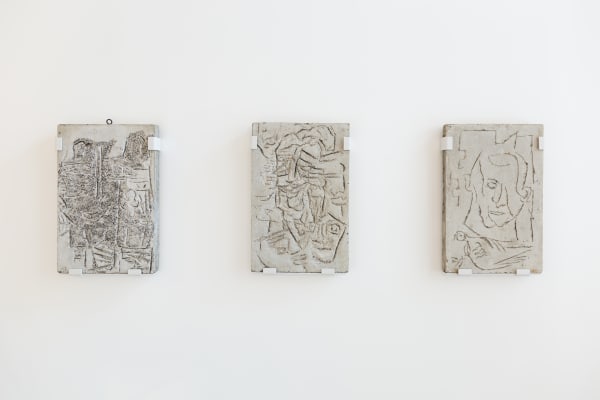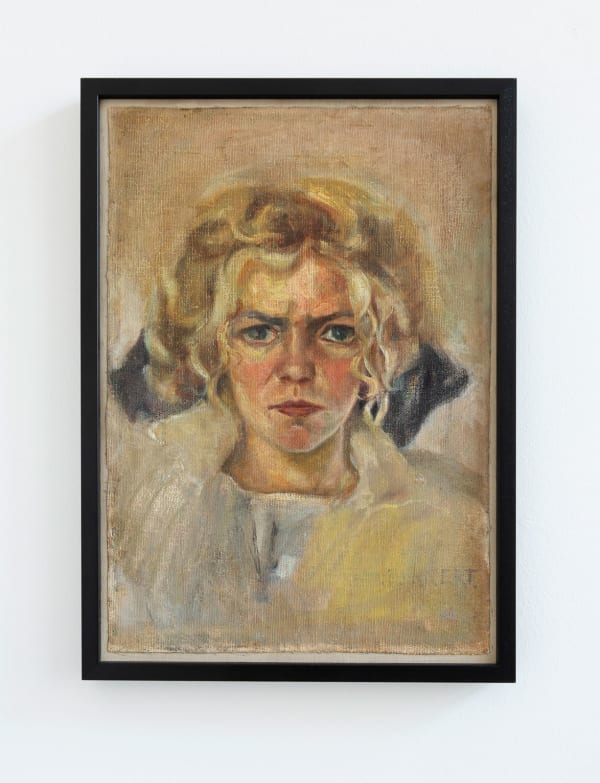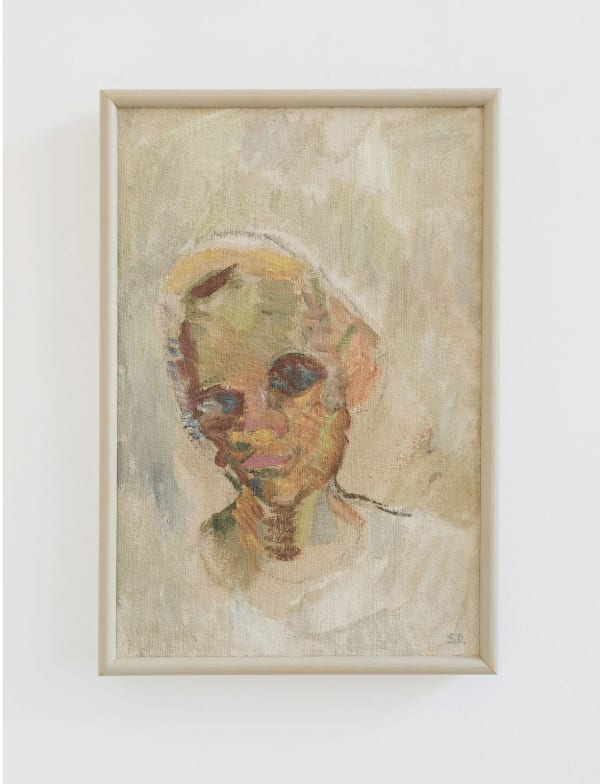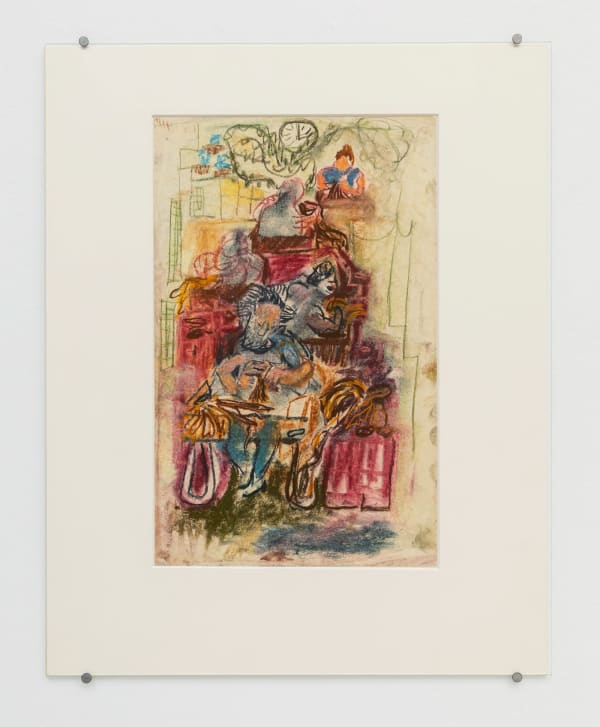Siri Derkert: Stockholm
Past exhibition
Overview
Opening: Thursday January 11 at 17:00 - 20:00
Siri Derkert’s life and work spanned most of the 20th century – a period of great societal and cultural change which was reflected in Derkert's artistic development, particularly in terms of her subject matter, technique and expression. The presentation at Andréhn-Schiptjenko, marking the gallery’s fourth solo exhibition with the artist, highlights a selection of works from each stage of her multifaceted artistic career, including her very first self-portrait from 1906-08, and follows her development until the late 1960s. This encompasses cubism, fashion drawing, intense portraiture, bronze sculpture and material experiments in concrete and metal - some of which are rarely seen works from one of the most important modernist artists in Sweden. Derkert's strong advocacy for women's rights, environmental protection and peace, as well as her experimental approach to the material, make her work as relevant as ever.
Derkert’s earliest work in the exhibition is a striking self-portrait from her time as a student at Caleb Althin's School of Painting in Stockholm. In the 1910s, Derkert developed a more cubist-orientated style of painting, represented in the exhibition by a set of sensitively constructed watercolours and gouaches on paper with the occasional stylized figure. At this time, Derkert was also working as a fashion illustrator and was an early adopter of the creative and expressive potential of fashion, which is why the exhibition also features select fashion drawings.
During the 1920s and 30s, Derkert experimented and developed her painting, often drawing inspiration from everyday life and a small circle of family members, friends and colleagues. The exhibition features expressive oil paintings such as Sara in the Window (1924) and brisk drawings of Derkert’s own children and their friends at Simpnäs; more or less dissolved figures in an interplay of bold contours and dynamic shapes. These images are characterized by an uninhibited playfulness, referring to a contemporary reality instead of an ideal private sphere. As a single mother of three, caring for her children while pursuing an artistic career were likely decisive factors in Derkert’s development of political opinion. Her portraits of children became a kind of weapon in her war against the patriarchy.
It was not until the 1940s that Derkert had her real breakthrough on the art scene, which occurred simultaneously with her socio-political commitment to peace and equality increasing after WWII. Her membership in the Swedish Women's Leftist Association and annual visits to the Fogelstad Women's Civic School during 1943-54 heavily impacted this creative development. At Fogelstad, she came in contact with women involved in the early suffrage movement and Derkert made many works portraying them speaking and teaching, including author Elin Wägner and labour inspector and politician Kerstin Hesselgren. A generous selection of these portraits is presented in the exhibition in the form of oil painting, drawings, bronze sculptures and works in concrete. Derkert’s main interest in these portraits is both private and political in nature, conveying the inner selves of those depicted and commitment to the feminist cause but with less emphasis on their physical appearance. The characters together form a portrait gallery that represents significant knowledge production, such as the work in concrete of social democratic politician Alva Myrdal or painting of educator Honorine Hermelin.
The women attending this school were not only educated in social issues, but also the arts, and Derkert likewise draws the Fogelstad Choir under the direction of organist and choirmaster Elsa Stenhammar. These drawings of joint singing sessions show the women merging into one body as a symbol of a close-knit female collective. The women at Fogelstad and the political issues raised there became important elements in Derkert's public works.
The process that had now begun lead to Derkert’s late, public commissioned works such as The Woman Pillar at T-centralen (1956-8) and the monumental work Carvings in Natural Concrete at Östermalmstorg’s metro station (1961-5) – arguably one of the most central works of modern Swedish art and a worthy manifestation for peace, equality and justice. The work, with its explicit political message, provoked strong reactions in the daily press at the time and was considered highly controversial. The Woman Pillar depicts numerous symbolic references, including women at work such as oarswomen, bricklayers, conductresses and typists, and highlights women's work as an essential part of their empowerment and contribution to the ongoing struggle for democratic rights. Derkert saw that part of the problem for women was the lack of role models, and this was a way of balancing the representation and visibility of contemporary women in the public sphere. The exhibition features delicate freehand drawings and sketches as models for both of these public works, in which vivid characters emerge.
These exhibited forty or so works are arranged according to a theme following the rhythmic distribution of the imagery in Derkert’s works. Intimate depictions from women’s everyday life are positioned alongside more explicit political appeal and social emancipation processes; the personal is political. This compilation of stylized figure groups, carved portraits, as well as the artist's different self-portraits – all with an assured sense of line and form, modernist expression and emphasis on political content – shows how her articulate voice permeated everything she did. Rhythm was also of utmost important in Derkert’s works, where musical rhythms and movements became symbols of the power of life. The artist experienced two world wars and was filled with the purpose of preventing a third; she was against violence and for life. To this day, her works pulsate with a sense of subversive vitality.
Siri Derkert (1888-1973) participated in the Venice Biennale in 1962, as the first Swedish representative at the newly opened Nordic Pavilion. The same year, she was shown in an extensive retrospective at the Stedelijk Museum in Amsterdam. Her work has been shown in two retrospectives at Moderna Museet in Stockholm (1960 and 2011). Derkert's work is included in many Swedish museum collections, including the National Museum, Stockholm, Moderna Museet, Stockholm, Malmö Art Museum, Gothenburg Art Museum, Skövde Art Museum and Museum of Artistic Process and Public Art, Lund, but also The British Museum, London.
Text by Sandrina Cerda. The exhibition is curated by Andréhn-Schiptjenko in collaboration with members of the Derkert family
For more information and images, please contact Hanna Lundberg at
hanna@andrehn-schiptjenko.com
hanna@andrehn-schiptjenko.com
Installation Views
Works
-
 Siri Derkert, Självporträtt, 1906-08
Siri Derkert, Självporträtt, 1906-08 -
 Siri Derkert, Sara i fönstret, 1924
Siri Derkert, Sara i fönstret, 1924 -
 Siri Derkert, Barn på klippor (Carlo och Marguerite), 1929
Siri Derkert, Barn på klippor (Carlo och Marguerite), 1929 -
 Siri Derkert, Statarbarnen på Hersbyholm, 1932-33
Siri Derkert, Statarbarnen på Hersbyholm, 1932-33


